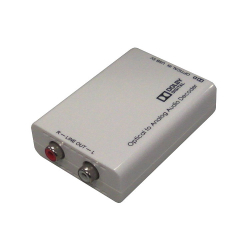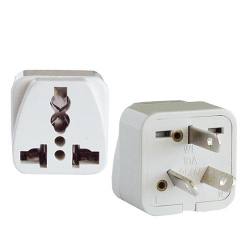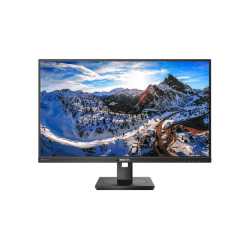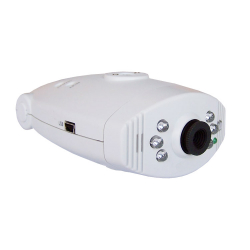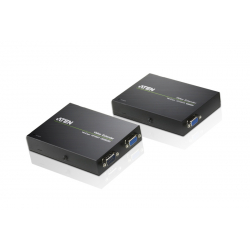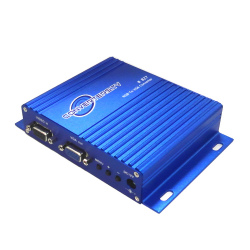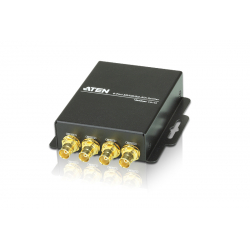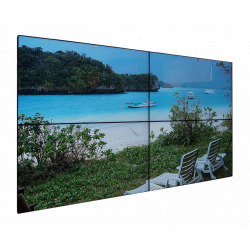A B C D E F G H I J K L M N O P Q R S T U V W X Y Z _
| EDTV | Enhanced Definition Television, also known as Extended Definition Television. EDTV is a format that delivers a picture that is superior to that of standard definition television (SDTV), but not as detailed as high definition television (HDTV). For example a television may accept a HDTV signal, will only display at a resolution of up to 480P. |
| HD Ready | Indicates the capability of a television to display High Definition video content. HD Ready refers to any display that is capable of accepting and displaying a high definition signal at either 720p, 1080i or 1080p using a component video or digital input, and does not have a built-in HD-capable tuner. The HD Ready label was introduced as a way to differentiate display equipment to help consumers, as previously many TV sources and displays were being promoted as capable of high definition when they were not. |
| MDA | Monochrome Display Adapter. MDA is a video display card introduced by IBM which did not have any graphics mode of any kind, but could display high resolution text characters. The MDA card featured a single monochrome text mode which could display 80 columns by 25 lines of high resolution text characters. This high character resolution was a feature meant to facilitate business and word processing use. MDA was introduced at the same time as the CGA card, which was aimed at PC users requiring bitmapped graphics and/or colour, rather than high resolution text. |
| PS/2 | A port type developed by IBM for the purpose of connecting a keyboard or mouse to a PC. The PS/2 port has a mini DIN plug containing 6 pins. Following the release of USB keyboards, PS/2 keyboards and mice have become less popular. |
| Deinterlacing | Deinterlacing is the process of converting interlaced video, such as common analog television signals or 1080i format HDTV signals, into a non-interlaced form (progressive). With interlaced video, since each field is only half the scanlines of a full frame, interpolation must be used to form the missing scanlines. There are various methods of doing the interpolation, ranging from simply doubling scanlines to motion-adaptive methods. Ideally, each field becomes its own frame of video, so an interlaced NTSC clip at 29.97 frames per second stream becomes a 59.94 frame per second progressive. |
| SDTV | Standard-definition television (SDTV) is a television system that has a resolution that meets standards but not considered either enhanced-definition television (EDTV) or high-definition television (HDTV). The term is usually used in reference to digital television, in particular when broadcasting at the same (or similar) resolution as analog systems. Examples of Standard Definition video modes are 480i, 480p, 576i and 576p. |
| RGB | A colour model in which Red, Green, and Blue light are added together in various ways to reproduce a broad array of colours. Computer monitors and TVs emit colour as RGB light. Although all colours of the visible spectrum can be produced by merging red, green and blue light, monitors are capable of displaying only a limited gamut of the visible spectrum. Typical RGB input devices are colour TV and video cameras, image scanners, and digital cameras. Typical RGB output devices are TV sets (CRT, LCD, plasma, etc.), computer and mobile phone displays, and video projectors. Colour printers, on the other hand, are not RGB devices, but subtractive colour devices - typically CMYK colour model where secondary colours (cyan, magenta and yellow) are used to simulate the colours required, with black (K) added to help CMY reproduce rich blacks and shadows. |
| XGA | Extended Graphics Array. A display standard with 1024×768 pixels display resolution. The initial version of XGA expanded upon IBM's VGA, adding support for two resolutions: 800×600 pixels with high colour (16 bits per pixel), and 1024×768 pixels with a palette of 256 colours (8 bits per pixel). XGA should not be confused with VESA's EVGA (Extended Video Graphics Array) which was released at a similar time. |
| YCbCr | A family of colour spaces, used in some HD applications, where colour is expressed using a luma component plus red and blue chroma components, rather than by describing absolute color values, as in the RGB colour model. The difference between YCbCr and RGB is that YCbCr represents color as brightness and two colour difference signals, while RGB represents colour as red, green and blue. In YCbCr, the Y is the the brightness (luma), Cb is blue minus luma (B-Y) and Cr is red minus luma (R-Y). The analog counterpart of YcbCr is YpbPr. |

